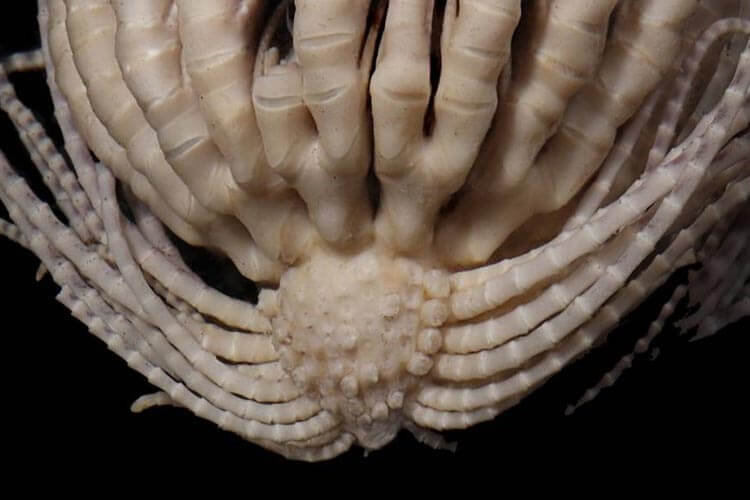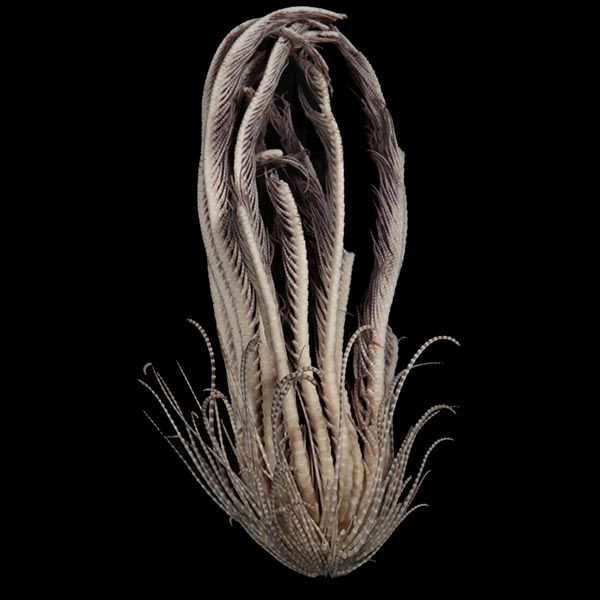Scientists Unveil a New Feather Star Species in the Antarctic

The Antarctic, a land of icy wilderness, has always been a realm of mystery and intrigue. In recent news, scientists have made an astonishing discovery - a new species of feather star thriving in the depths of this remote region. This groundbreaking finding offers a fascinating glimpse into the diverse and resilient ecosystems that exist in the Antarctic, further reinforcing the importance of scientific research in understanding and protecting marine life. Join me as we delve into the wonders of this newfound species and explore the significance of this discovery.
What are Feather Stars and Their Significance in Marine Ecosystems?
Feather stars, scientifically known as crinoids, are mesmerizing marine creatures that belong to the phylum Echinodermata. They are adorned with delicate feathery appendages, resembling the shape of a star, hence their name. These captivating organisms play a crucial role in marine ecosystems, acting as filter feeders and enhancing nutrient cycling. By extending their feathery arms into the water, feather stars capture tiny particles of plankton, effectively reducing the overall abundance of these organisms. This intricate feeding mechanism ensures a balanced and healthy marine environment.
The Process of Discovering a New Species in the Antarctic
Discovering a new species is no easy feat, especially in the vast and inhospitable Antarctic region. However, through a combination of meticulous fieldwork and advanced genetic analysis, scientists were able to identify a previously unknown species of feather star. The journey began with several research expeditions to the Antarctic, where samples of various marine organisms, including feather stars, were collected. These samples were then subjected to rigorous laboratory analysis, where DNA sequencing techniques were employed to establish the genetic distinctiveness of the newfound species. This groundbreaking approach allowed scientists to confirm the existence of a new feather star species, adding to the ever-growing list of wonders hidden beneath the icy waters of the Antarctic.

The Characteristics and Unique Features of the Newly Discovered Feather Star Species
The newly discovered feather star species in the Antarctic possesses several unique characteristics that set it apart from its relatives. Firstly, its colouration is a stark contrast to the predominantly white and blue hues of the Antarctic seascape. Additionally, this species possesses an exceptional ability to withstand the extreme cold temperatures of the Antarctic. Through adaptations in their cellular structure and metabolism, these feather stars have evolved to thrive in this unforgiving environment. The discovery of such resilience in a species brings hope for the future of Antarctic marine life in the face of climate change.
The Role of the Antarctic in Biodiversity and Conservation Efforts
The Antarctic region has long been recognized as a biodiversity hotspot, teeming with unique and endemic species. Its isolated nature, coupled with the extreme environmental conditions, has allowed for the evolution of diverse and specialized life forms. The discovery of a new feather star species only further highlights the significance of the Antarctic in global biodiversity and conservation efforts. By studying and protecting these delicate ecosystems, scientists can gain invaluable insights into the interconnectedness of marine life and the impacts of human activities. With the increasing threats posed by climate change and overfishing, it is crucial to prioritize the conservation of this pristine wilderness to ensure the survival of these newly discovered species and the delicate balance of the Antarctic ecosystem as a whole.
Other Interesting Sea Animals Found in the Antarctic Region
Apart from the newfound feather star species, the Antarctic is home to a myriad of fascinating sea creatures. From colossal whales to elusive penguins, this icy realm is a treasure trove of biodiversity. One iconic inhabitant of the Antarctic is the magnificent orca, also known as the killer whale. With its striking black-and-white colouration and powerful presence, the orca is a top predator in these frigid waters. Another charismatic species found in the Antarctic is the emperor penguin, renowned for its remarkable breeding cycle and resilience in the harshest of conditions. These captivating creatures, along with countless others, contribute to the rich tapestry of life in the Antarctic and highlight the importance of preserving this fragile ecosystem.
The Importance of Scientific Research in Understanding and Protecting Marine Life
Scientific research plays a pivotal role in unravelling the secrets of the natural world and guiding conservation efforts. In the case of the newly discovered feather star species, extensive research and fieldwork were essential in bringing this newfound beauty to light. Through detailed observations and data collection, scientists can better understand the behaviour, physiology, and ecological interactions of these organisms. This knowledge serves as a foundation for effective conservation strategies, allowing us to make informed decisions to safeguard marine life and protect delicate ecosystems. Additionally, scientific research acts as a catalyst for public awareness and education, fostering a sense of responsibility and inspiring future generations to take action to preserve the wonders of our oceans.
How the Discovery of New Species Contributes to Scientific Knowledge
The discovery of a new species is not merely a cause for celebration but also a significant contribution to scientific knowledge. Each new species unravelled adds to our understanding of the intricate web of life and the processes that shape our planet. By studying the genetic makeup, behaviour, and adaptations of these newfound creatures, scientists can gain insights into evolutionary processes, ecological relationships, and even potential applications for human health and technology. Furthermore, the discovery of new species serves as a reminder of the vast diversity that exists on Earth, highlighting the need for continued exploration and protection of our planet's ecosystems.
The Impact of Climate Change on the Antarctic Ecosystem and its Implications for New Discoveries
Climate change poses a grave threat to the delicate balance of the Antarctic ecosystem. Rising temperatures, melting ice, and changing ocean currents have far-reaching consequences for the creatures that call this icy wilderness home. As the Antarctic undergoes rapid transformation, new discoveries become both a cause for excitement and concern. While the unveiling of a new species showcases the resilience and adaptability of life in the face of adversity, it also serves as a stark reminder of the fragility of these ecosystems. Understanding the impact of climate change on Antarctic species and their habitats is crucial for developing effective conservation strategies and mitigating the threats posed by human activities.
Conclusion: The Excitement and Potential for Future Discoveries in the Antarctic
The discovery of a new feather star species in the Antarctic is a testament to the untapped wonders that lie beneath the icy depths. It serves as a reminder of the vastness of our planet's oceans and the importance of scientific exploration in unlocking their secrets. As we continue to unravel the mysteries of the Antarctic, we are met with an ever-growing sense of excitement and wonder. For every new discovery, there is the potential for profound insights into the intricate tapestry of life and the urgent need to protect these fragile ecosystems. Let us embrace the thrill of the unknown and work tirelessly to safeguard the Antarctic, ensuring that future generations can marvel at the wonders that await beneath the ice.
CTA: Join us in supporting scientific research and conservation efforts to protect the fragile ecosystems of the Antarctic and preserve the incredible biodiversity that thrives in this icy wilderness. Together, we can make a difference in safeguarding our planet's future.



